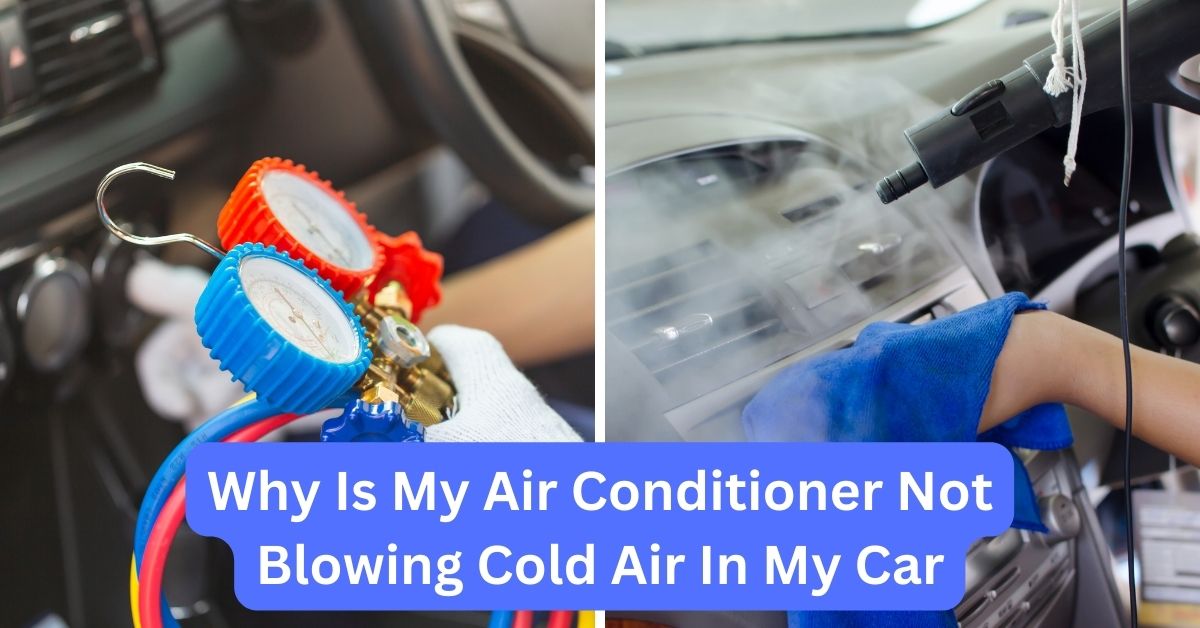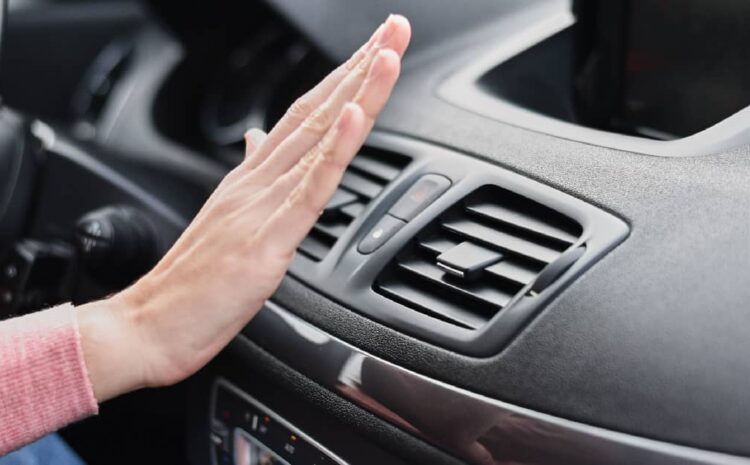Car Air Conditioner Blowing But Not Cold

There's nothing more frustrating than a car air conditioner that blows air, but offers little to no relief from the heat. You turn the dial, hear the familiar hum of the fan, but instead of a refreshing blast of cold air, you're met with lukewarm disappointment. This common automotive problem can stem from various issues, ranging from simple fixes to more complex repairs. Understanding the potential causes is the first step in getting your car's AC back in top condition.
Common Culprits Behind a Warm Breeze
Several factors can contribute to a car air conditioner blowing warm air. Let's examine the most frequent culprits:
Low Refrigerant Levels
Refrigerant, often called Freon (although newer systems use different refrigerants), is the lifeblood of your AC system. It absorbs heat from the cabin air and releases it outside. Over time, refrigerant can leak, leading to reduced cooling capacity. This is arguably the most common reason for warm air.
"Refrigerant isn't consumed like fuel; it's a closed-loop system. If you're consistently low, you likely have a leak that needs addressing."
Pros: Relatively inexpensive to diagnose and recharge if the leak is minor.
Cons: Finding and repairing the leak can become costly, especially if it’s located in a hard-to-reach area like the evaporator core.
Compressor Issues
The compressor is the heart of your AC system. It pressurizes the refrigerant, enabling the cooling process. A failing compressor won't be able to adequately compress the refrigerant, resulting in weak or no cooling. Compressor failure can be caused by age, lack of lubrication, or internal damage.
Pros: Replacing the compressor restores full cooling power.
Cons: Compressor replacement is a significant repair, involving parts and labor. The system also needs to be properly flushed to remove any contaminants.
Condenser Problems
The condenser, typically located in front of the radiator, dissipates heat from the refrigerant. If the condenser is blocked by debris (leaves, bugs, etc.) or damaged, it won't be able to efficiently release heat, leading to reduced cooling performance.
Pros: Cleaning a blocked condenser is a simple and inexpensive fix.
Cons: A damaged condenser requires replacement, which can be moderately expensive, especially if it's part of a complex assembly.
Clogged or Failing Expansion Valve
The expansion valve controls the flow of refrigerant into the evaporator. A clogged or malfunctioning valve can restrict the refrigerant flow, hindering the cooling process. Symptoms include inconsistent cooling or no cooling at all.
Pros: Replacing the expansion valve can restore proper refrigerant flow.
Cons: Accessing the expansion valve can be labor-intensive, increasing repair costs.
Electrical Problems
The AC system relies on various electrical components, including switches, relays, and wiring. A blown fuse, faulty relay, or damaged wiring can prevent the compressor from engaging, resulting in no cold air. A faulty blend door actuator can also prevent proper cooling.
Pros: Electrical problems can sometimes be relatively easy and inexpensive to fix.
Cons: Diagnosing electrical issues can be time-consuming and require specialized tools and knowledge.
Blend Door Malfunction
The blend door controls the mixing of hot and cold air inside the cabin. If the blend door is stuck in the hot position (often due to a faulty actuator), the AC will blow warm air, even if the system is functioning correctly.
Pros: Actuator replacement is typically less expensive than compressor or condenser repairs.
Cons: Accessing the blend door actuator can be difficult in some vehicles.
Troubleshooting Steps: A DIY Approach
Before heading to the mechanic, consider these basic troubleshooting steps:
- Check the AC fuse: Consult your owner's manual to locate the AC fuse and inspect it for damage. Replace if necessary.
- Inspect the condenser: Look for debris blocking the condenser fins. Clean it gently with a brush or hose.
- Listen for the compressor clutch: With the AC turned on, listen for a clicking sound coming from the compressor. This indicates that the compressor clutch is engaging. If you don't hear the click, the compressor may not be receiving power.
Warning: Working with refrigerants requires specialized equipment and training. Improper handling can be dangerous and harmful to the environment. If you suspect a refrigerant leak or are unsure about any repair, consult a qualified automotive technician.
Professional Diagnosis and Repair
If the DIY steps don't resolve the issue, it's time to seek professional help. A qualified mechanic will have the tools and expertise to accurately diagnose the problem and perform the necessary repairs. The diagnostic process typically involves:
- Refrigerant pressure test: Measuring the refrigerant pressure to determine if it's within the proper range.
- Leak detection: Using specialized equipment to locate refrigerant leaks.
- Compressor inspection: Checking the compressor's performance and functionality.
- Electrical system testing: Diagnosing electrical faults that may be affecting the AC system.
Cost Considerations
The cost of repairing a car AC system can vary significantly depending on the problem and the vehicle model. Here's a general estimate of repair costs:
- Refrigerant recharge: $100 - $300 (includes leak detection)
- Compressor replacement: $500 - $1200
- Condenser replacement: $300 - $800
- Expansion valve replacement: $200 - $500
- Blend door actuator replacement: $150 - $400
These are just estimates, and the actual cost may vary. Always get a written estimate from the mechanic before authorizing any repairs.
Preventative Maintenance for a Cool Ride
Regular maintenance can help prevent AC problems and extend the life of your system. Consider these tips:
- Run the AC regularly: Even during the winter months, run the AC for a few minutes each week to keep the system lubricated.
- Inspect the condenser: Regularly check the condenser for debris and clean it as needed.
- Change the cabin air filter: A clogged cabin air filter can restrict airflow and reduce cooling efficiency.
- Have the system inspected annually: A professional inspection can identify potential problems before they become major issues.
Choosing the Right Repair Shop
When selecting a repair shop, consider the following:
- Reputation: Check online reviews and ask for recommendations from friends or family.
- Experience: Choose a shop with experience in repairing car AC systems.
- Certifications: Look for shops that employ technicians certified by organizations like the National Institute for Automotive Service Excellence (ASE).
- Warranty: Inquire about the warranty on parts and labor.
A car air conditioner that blows warm air is a common but frustrating problem. By understanding the potential causes, performing basic troubleshooting, and seeking professional help when needed, you can get your AC back in working order and enjoy a cool and comfortable ride.










